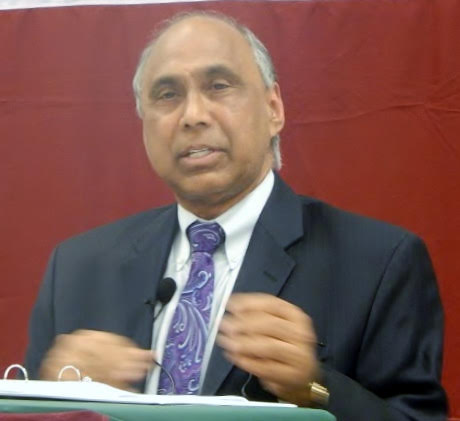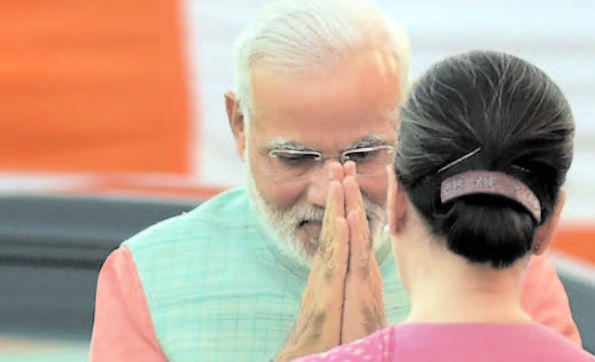
NEW DELHI (TIP): Railways Minister Suresh Prabhu shunned the populism of the past to deliver a reform-oriented railway budget on Thursday, February 26, that focused on modernizing an ageing network and improving amenities for the 23 million
Indians who ride its trains daily. There were no new services to politically important regions and no plans to set up new factories, a staple of past budgets. And while there were no passenger fare increases, freight rates for some commodities rose by an average of 3%, and aggressive projections for revenues suggested that further hikes were an option if the economy continued to pick up.
The 61-year-old Prabhu, a chartered accountant by training, said he was determined to transform the Indian Railways, a monolith that employs over a million people and which made a massive Rs 26,000-crore loss in its passenger operations last year.
“It will take time to neutralize the legacy of the past. It cannot be business as usual”, he said, outlining an outsize 52% increase in spending this year compared to the normal 10-12% yearly rise. A tenth of the spending will go towards building dedicated freight corridors.
The railways, with their vast reach, are a key lever in Prime Minister Narendra Modi‘s plans to boost the Indian economy, which is projected by the World Bank to grow faster than China‘s next year.
So Prabhu, seen as a modern-minded technocrat, was parachuted into the ministry in November; he did not disappoint in an hour-long speech by outlining plans for Wi-Fi at 400 stations, CCTVs in trains for women’s safety and easier norms for unreserved tickets.
India will import a couple of trains which will run at up to 160 kilometers per hour on existing tracks, a full 30 kmph faster than the country’s speediest train. Under the PM’s pet Make in India scheme, production of such trains was likely to be indigenized, Prabhu said.
Modi tweeted soon after Prabhu’s hour-long speech: “The rail budget is futuristic and passenger-centric and lays out a clear roadmap to make the national transporter the key driver of the country’s economic growth – combining a clear vision and a definite plan to achieve it”.
But Congress president Sonia Gandhi was unimpressed. “Rail Budget 2015 is very disappointing, they are only presenting old UPA’s initiatives revamped,” the party’s Twitter handle quoted her as saying.
Prabhu also listed novel plans to raise money from foreign pension funds and multilateral development banks to finance an ambitious five-year plan.
Over this period, Prabhu plans to increase the daily passenger carrying capacity to 30 million; increase the track length by a fifth to 138,000 kilometers and increase the annual freight carrying capacity by 50% to 1.5 billion ton.
Highlights of Railway Budget
- The most-expected part about this year’s Railway Budget – there is no increase in passenger rail fares.
- Rs.8.5 lakh crore will be invested in Railways in next 5 years.
- ‘Operation 5 mins’, wherein passengers gravelling unreserved can purchase a ticket in 5 minutes.
- Bio toilets and airplane-type vacuum toilets in trains.
- Surveillance cameras in select coaches and ladies compartments for women’s safety without compromising on privacy.
- Rail tickets can now be booked 120 days in advance.
- Speed on nine railway corridors to go up to 200 km per hour
- Wi-Fi in more stations, mobile phone charging facilities in all train compartments.
- Facility of online booking of wheelchair for senior citizens.
- Satellite railway terminals in major cities
- Centrally managed Rail Display Network is expected to be introduced in over 2K stations over the next 2 years.
- All India 24/7 helpline – 138 from March 2015 ; Toll free No.182 for security.
- 917 road under-bridges and over-bridges to be constructed to replace 3,438 railway crossings; at a cost of Rs. 6,581 crore.
- Four Railway Research Centers to start in four universities.
- Details about new trains and increased frequency will be announced later in this session of Parliament after review.
What is the investment plan?
The Railway Budget envisages an investment of Rs. 8.5 lakh crore in next five years.
How is it going to be mobilized?
The Minister suggested that the money could be raised from multiple sources – from multilateral development banks to pension funds.
What is the action plan in the sphere of fund raising?
Go in for partnership with key stakeholders – States, PSUs, partner with multilateral and bi-lateral organizations other governments to gain access to long-term financing. Also, get technology from overseas. The private sector could be roped in to improve last-mile connectivity, expand fleet of rolling stock and modernize station infrastructure.
What is the thrust?
The thrust will be on revamping management practices, systems, processes, and re-tooling of human resources.
What is the proposal on capacity augmentation?
- De-congesting networks with basket of traffic-generating projects will be the priority
- Priority to last-mile connectivity projects
- Fast-track sanctioned works on 7,000 kms of double/third/fourth lines
- Commissioning 1200 km in 2015-16 at an investment of Rs. 8,686 crore, 84% higher Y-O-Y.
- Commissioning 800 km of gauge conversion targeted in current fiscal.
- 77 projects covering 9,400 km of doubling/tripling/quadrupling works along with electrification, covering almost all States, at a cost of Rs. 96,182 crore, which is over 2700% higher in terms of amount sanctioned.
- Traffic facility work is a top priority with an outlay of Rs. 2374 crore.
- Award of 750 km of civil contracts and 1300 km of system contracts in 2015-16 on Dedicated
- Freight Corridor (DFC); 55 km section of Eastern DFC to be completed in the current year.
- Preliminary engineering-cum-traffic survey (PETS) for four other DFCs in progress.
- Acceleration of pace of Railway electrification: 6,608 route kilometers sanctioned for 2015-16, an increase of 1330%over the previous year.





Be the first to comment